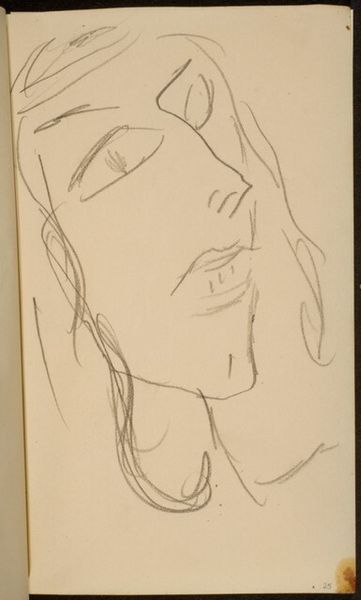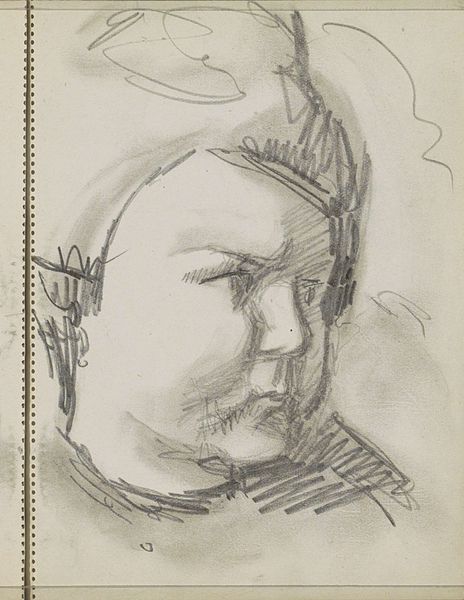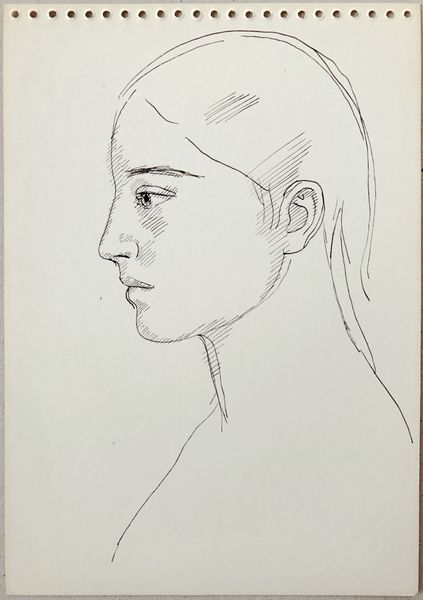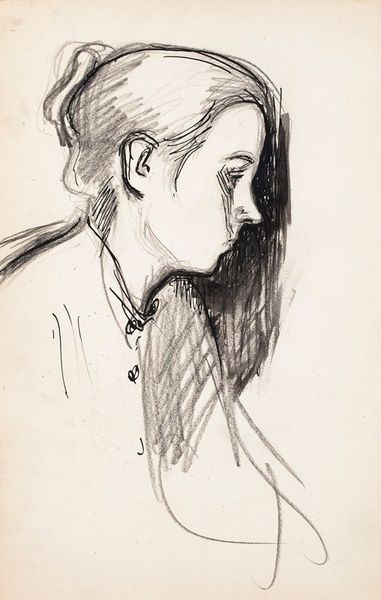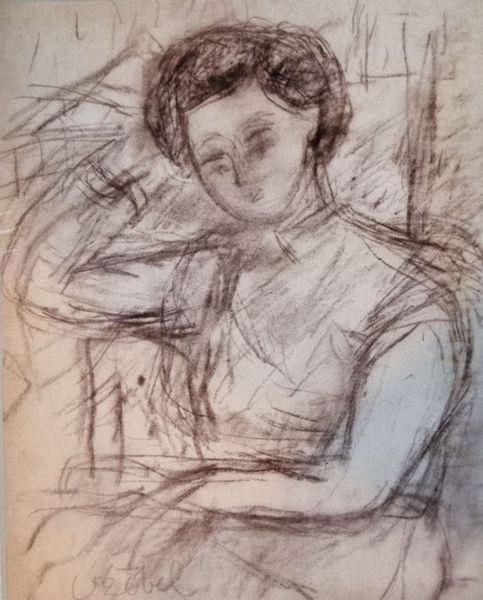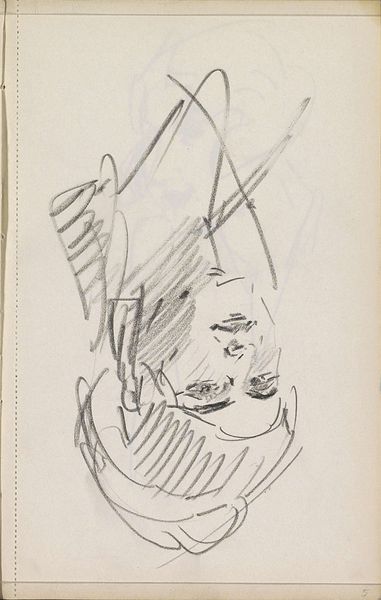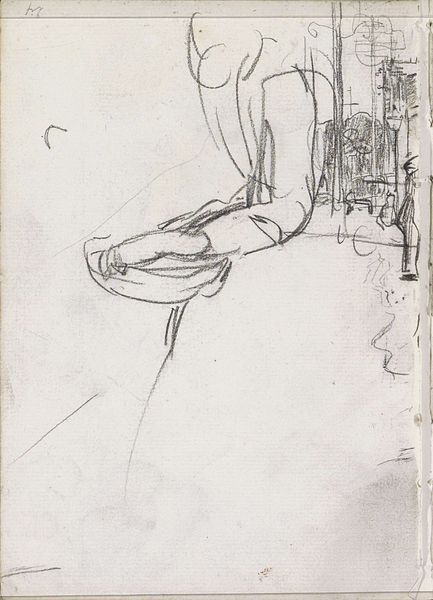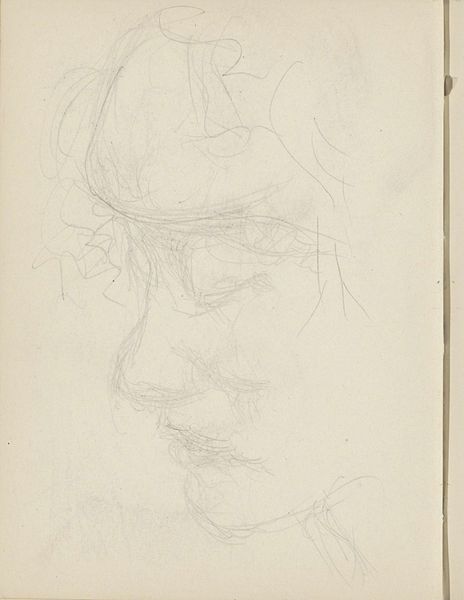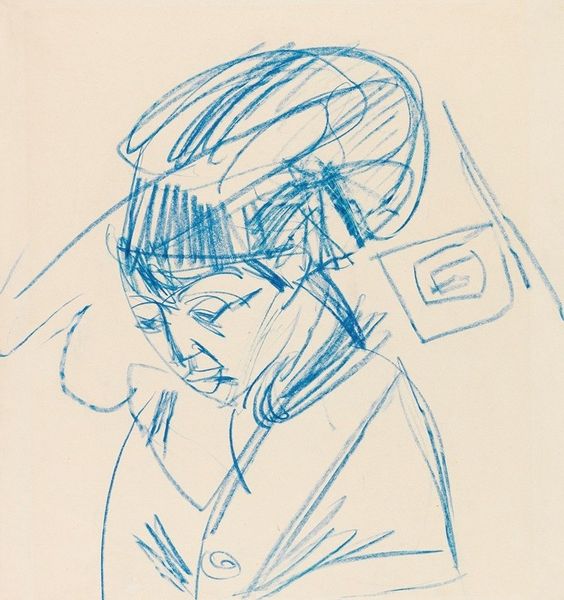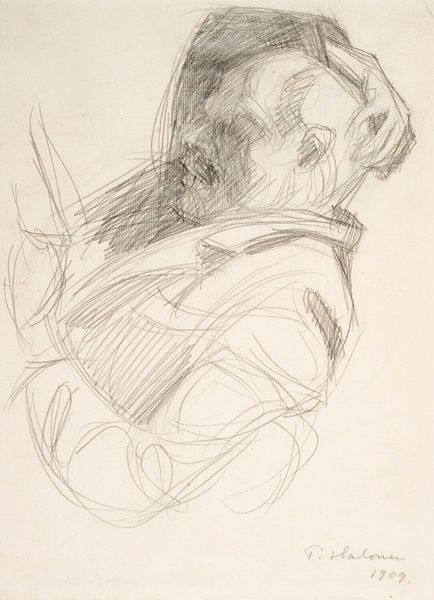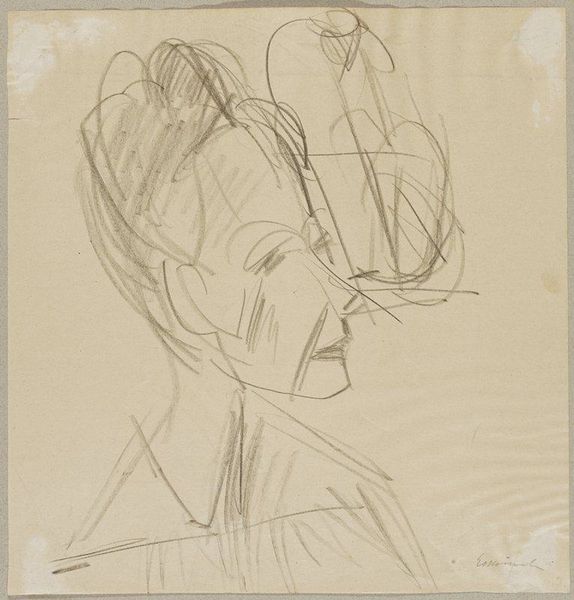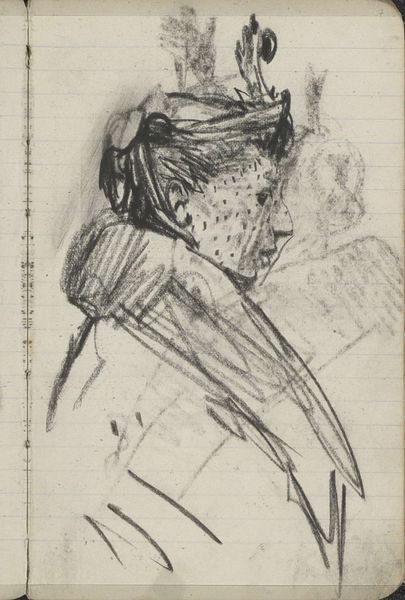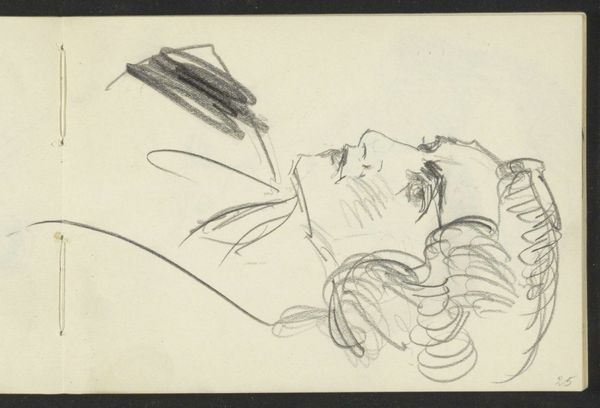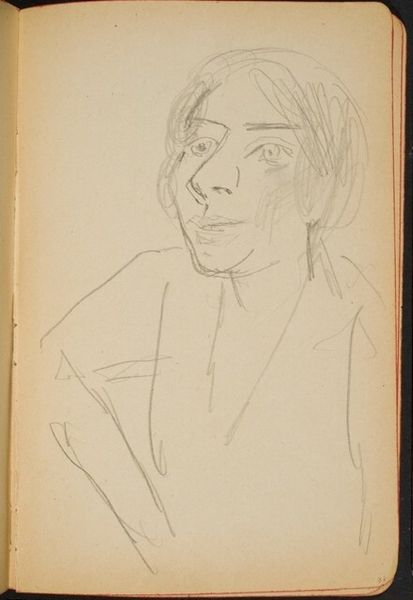
drawing, pencil
#
portrait
#
drawing
#
ink drawing
#
pen sketch
#
figuration
#
pencil
Dimensions: 255 mm (height) x 200 mm (width) x 8 mm (depth) (bladmål), 255 mm (height) x 200 mm (width) (bladmaal)
Curator: Here we have J.A. Jerichau’s drawing "Dante, profil m.h.," created around 1915 or 1916, held at the SMK. It's a striking, economical pencil sketch. Editor: Immediately, I’m struck by the severity in his profile – that very prominent nose and determined set to the jawline convey a certain... austerity, don't you think? Curator: Absolutely. Consider Jerichau's approach. The quick, almost frenetic pencil strokes indicate a mind grappling with the weight of history and Dante's lasting cultural significance. The materials are humble, almost pedestrian – simple pencil on what appears to be sketchbook paper. Yet, that very directness lends the portrait an immediacy. There’s no pretense, no gilding of the subject. It becomes a material encounter with Dante through Jerichau’s hand. Editor: And look at the symbolic load carried in that turban. The head covering immediately identifies Dante, evoking both his era and intellectual stature. The way it’s sketched – loosely, almost ethereally – gives a sense of his elusive, timeless presence in Western thought. Dante the exile, the visionary. The economy of the line underscores the enduring power of his image and, frankly, the myth of the man. Curator: I agree, and the sketch-like quality also provides insights into Jerichau’s artistic process. It allows us to contemplate not just the *final* product, but the labor and materiality behind constructing the idea of 'Dante.' How do materials shape perception? How do quick sketches compared to elaborate academic paintings relate to mass consumption and artistic expression? It forces us to question art making as not only an intellectual enterprise, but manual, process driven work. Editor: So while it captures a likeness, however swiftly executed, it also represents the weight of cultural inheritance, the burden of symbolic representation placed on the image of this singular figure across centuries. Jerichau wasn’t merely drawing a man; he was grappling with an icon. Curator: Precisely. It pushes against the idea of art being purely about skillful representation, inviting consideration of how art making acts in the creation of shared consciousness, memory, and ultimately culture through both form and materials. Editor: In its simple strokes, we've unearthed layers of meaning—from the weight of cultural symbols to an artist’s direct engagement with their subject. It's a testament to how a seemingly simple portrait can resonate across time. Curator: Indeed, showing us how materials and process serve as avenues to consider broader sociohistorical conditions.
Comments
No comments
Be the first to comment and join the conversation on the ultimate creative platform.
